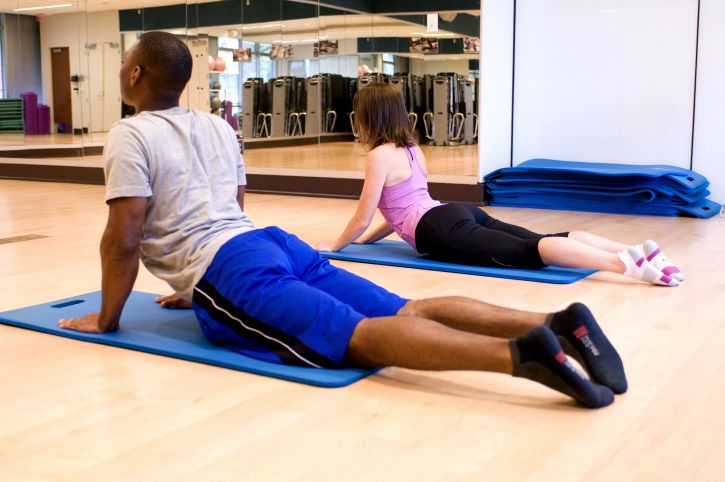Whether you’re currently being treated or you’re waiting for an appointment to figure out the source of the discomfort in your back, find out more about the common causes of back pain and influential movement that helps curb the hurt.
What Are the Common Causes of Back Pain?
The back and spine are complex working mechanisms in your body. While your entire system is made of minutiae, the spine can significantly impact the quality of your day.
Risk Factors
People with specific characteristics are at a greater risk for back issues than others, though anyone can experience back pain.
- Older than 45 years of age
- Genetic disorders affecting the back
- Low fitness level
- Poor muscle development in the stomach and back
- Weight gain and obesity
- Occupational hazards
Types
Risk factors might increase the odds that you will experience back pain or a back injury throughout your lifetime, but they are not typically the cause of back pain. Back pain comes from various reasons, ranging from strains to fractures to pregnancy. Generally, the type of pain you experience is categorized in three ways in physical therapy for lower back pain.
- Chronic back pain lasts longer than 12 weeks and can come on quickly or slowly.
- Subacute back pain lasts 4 to 12 weeks and can come on overtime or suddenly.
- Acute back pain lasts a few hours to a few weeks and comes on suddenly.
Sources
The causes of back pain come from three different sources, not to be confused with the three different types of pain. The three sources describe the location and condition of the back pain.
Medical Conditions
These conditions are not specific to back pain and injury but can cause back pain as a chronic symptom of the illness. Back pain from medical conditions is part of Raleigh, North Carolina physical therapy treatment.
- Tumors
- Fibromyalgia
- Osteoporosis
Inflammatory Conditions
Symptoms that come from a condition will fluctuate based on the irritation of the spine due to specific triggers that cause back pain.
- Rheumatoid arthritis
- Ankylosing spondylitis
- Celiac disease
Mechanical Problems
Structural problems disrupt the standard working parts of the back and create painful interruptions in movement.
- Scoliosis
- Strain
- Herniated disc
Stretches To Help With Back Pain
Stretches help loosen tight muscles and improve mobility to return to routine activities. Stretches are often included as part of an individualized program from cutting edge physical therapy in North Carolina.
- Levator scapula stretch
- Flexion stretch
- Piriformis muscle stretch
- Chair hamstring stretch
- Knee to chest stretch
- Corner stretch
Exercises To Help With Back Pain
Exercising is more of a preventative approach to refrain from repeat injury. However, some people prefer to include light exercise and movement with their stretching routine.
- Walking
- Cycling
- Aerobics
- Elliptical
- Pilates
- Yoga
Recovering from back pain requires specialized care and treatment to make a full recovery. Work to loosen your muscles and maintain flexibility by practicing stretches and exercises to control back pain as you prepare for your next appointment.





